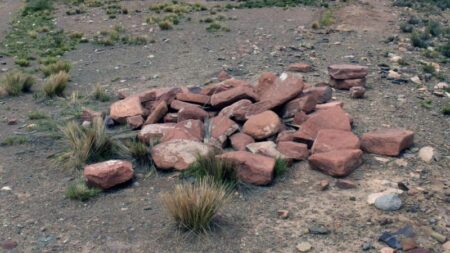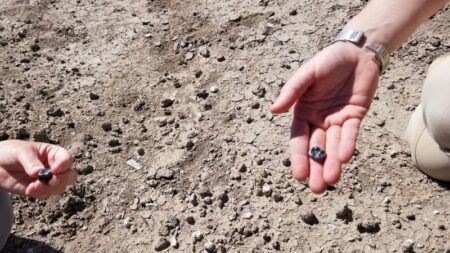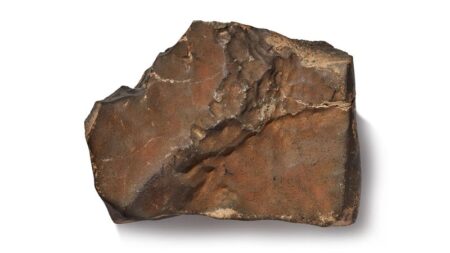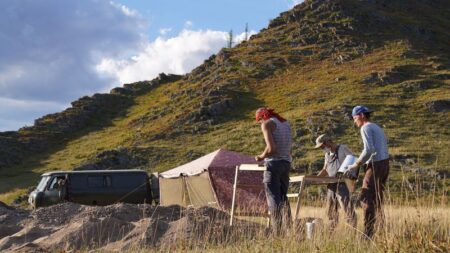The ancient Roman city of Pompeii, famously buried under volcanic ash during the catastrophic eruption of Mount Vesuvius in AD 79, stands as a striking testament to the power of nature and the fragility of civilization. This once-thriving urban environment now resembles an almost surreal time capsule, preserving the remnants of its inhabitants and their lifestyles. However, recent research points to another layer of story—a more complex narrative concerning the city’s post-eruption life and the people who returned to these ruins in the aftermath.
Research led by Gabriel Zuchtriegel, the director of the Archaeological Park of Pompeii, reveals that not only did some survivors return to the devastated city, but they also chose to inhabit the ruins, navigating the precarious circumstance brought on by the calamitous event. Discoveries made in the Insula Meridionalis, one of the neighborhoods in the southern part of Pompeii, show pottery and artifacts that date to the years following the disastrous eruption. These findings suggest that many survivors occupied the upper levels of the buildings that remained above the ash, as they sought shelter amidst the ruins.
This newly discovered information underscores the fact that Pompeii’s residents eventually abandoned the site after further eruptions in the fifth century, leaving the city undisturbed until systematic excavations began in 1748. Zuchtriegel states that the catastrophic destruction of Pompeii has overridden the memory of later reoccupations, which have historically been overlooked by researchers, who were eager to unearth the well-preserved settings of AD 79 instead.
The excavation at Insula Meridionalis has revealed fascinating insights into what life was like for those who returned. Archaeologists found that some building ceilings did not collapse until the second to fourth centuries, thus likely making parts of the structures visible for returnees. The once lively ground floors became repurposed spaces; what were once shops and homes turned into cellars and makeshift living areas where residents could create necessities like ovens, mills, and fireplaces.
Evidence indicates that this reoccupation of Pompeii was more than a fleeting return. Artifacts discovered, such as cooking vessels and ceramics, some bearing early Christian symbolism, point to a community trying to establish a semblance of permanence. These items suggest that the citizens of the reformed Pompeii had begun to create a new, albeit humble, lifestyle using materials salvaged from the ruins, such as reusing bricks and tiles from earlier structures. A significant find was a piece of coinage depicting the Roman emperor Marcus Aurelius, dating back to AD 161, which indicates that people returned to Pompeii just a few decades after the disaster.
Despite efforts from heirs of the government like Emperor Titus, who sought to assist the survivors after the eruption, the population never fully revived its former glory as a substantial port city. Continued volcanic activity led to economic decline and gradual settlement abandonment by the sixth century. Scholars highlight that the residents of Pompeii ultimately faced a harsh reality characterized by the need to dig wells for water beneath the ash and deal with the loss of the comforts of their former Roman way of life.
The study underscores the importance of acknowledging the less visible “invisible city” of Pompeii that emerged following the eruption. According to Zuchtriegel, this research repositions Pompeii not merely as a site of archaeological curiosity but as a space steeped in a living history of struggle, resilience, and adaptation in the face of overwhelming adversity. This notion of archaeological memory reflects the ongoing need to document and reinterpret what lies beneath the surface—a process akin to liberating the repressed facets of history that often get overshadowed by narratives of grandeur.
Experts agree that this recent work sheds light on various aspects of Pompeii’s post-eruption landscape, emphasizing human resilience in the struggle for survival and adaptation amid a landscape forever transformed by disaster. The evidence continues to mount that the post-eruption period marked a distinctive chapter in the life of Pompeii, one that merits exploration and understanding beyond the encompassing shadow of its ancient tragedy.












